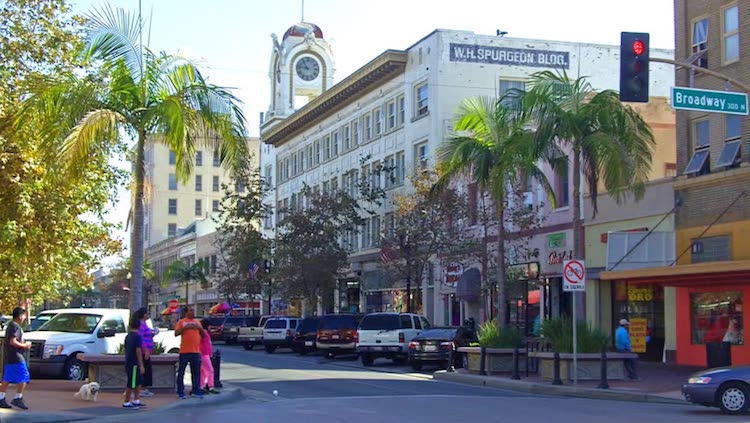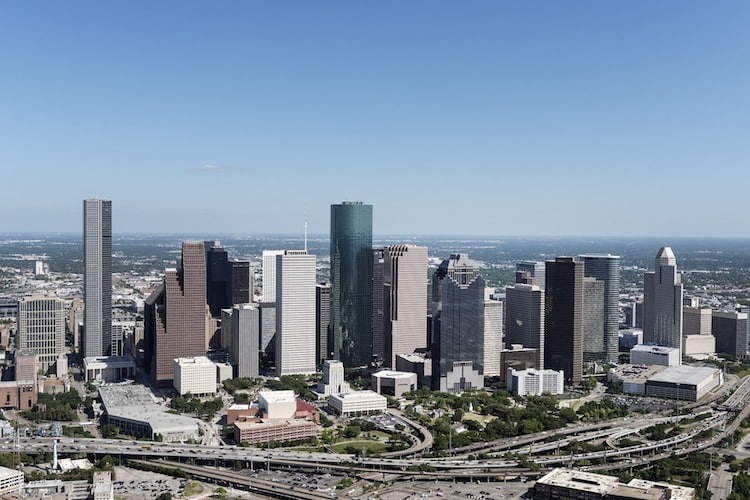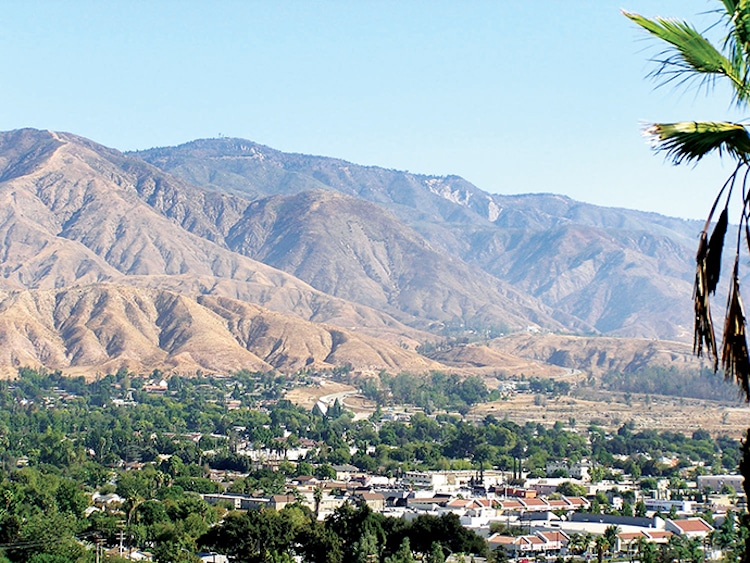To be successful when moving abroad from your home country, it’s important to find a community of people who can help you with important resources, such as finding a place to live, getting a job, and feeling connected to your new home.
The United States is a very popular destination for people moving abroad from Mexico. As of 2017, people from Mexico in the United States totalled around 12 million. According to U.S. census data, just under half of this community lives in ten large metropolitan areas.
If you’re considering moving away from Mexico to the United States, here are the top five destinations that many have come to call home, along with what makes each of these areas so unique.
Los Angeles – Long Beach – Santa Ana, CA
| Number of People from Mexico in metro area (2010) | Total metro area population | Percent of population |
| 1.74 million | 13 million | 13.3% |
As of 2015, the Los Angeles area is home to the second largest Spanish-speaking community in the world, second only to Mexico City. For decades, the Pico-Union neighborhood has been the first stop for people moving away from Mexico, Central America, and other parts of Latin America.
Besides Pico-Union and many areas within Los Angeles County, suburbs such as Santa Ana and Orange County are home to many businesses owned by and geared toward Latin American communities from abroad. Latino culture is present everywhere, from heritage museums and mariachi displays to the many cuisine options available at all types of establishments.
For more resources in the Los Angeles area, visit the Latino Community Resources page on the University of Southern California’s website.
A snapshot of the streets of Santa Ana:

Chicago – Joliet – Naperville, IL metro area
| Number of People from Mexico in metro area (2010) | Total metro area population | Percent of population |
| 669,000 | 9.51 million | 7.0% |
Chicago is also home to a long-established community of people from Mexico, the first of whom arrived in the 1910s and 1920s. Over time, with a more established community, people arriving to Chicago from Mexico have become deeply connected to local politics and unions.
There are a number of local organizations and committees to advocate for a better quality of life and to encourage kids in these communities to pursue higher education, such as the International Latino Cultural Center of Chicago.
Thanks to the collaboration of newcomers with longtime residents, many places have been established to create a welcoming and supportive community, such as arts and culture organizations (including the art museum), widely available authentic cuisine, and Spanish-language media.
Here’s an event at the National Museum of Mexican Art — just one example of many ways that this organization engages with their local community!
https://www.instagram.com/p/BnjROjcnmY_/?utm_source=ig_web_button_share_sheet
Houston – Sugarland – Baytown, TX metro area
| Number of People from Mexico in metro area (2010) | Total metro area population | Percent of population |
| 606,000 | 6.31 million | 9.8% |
Houston is home to one of the nation’s most diverse metro areas overall, and immigration has majorly contributed to this diversity.
At the time of the 2010 census, Houston did not have a majority racial or ethnic group, but in 2017, Hispanic communities made up 44.3% of Houston’s population. People relocating from Spanish-speaking countries have felt welcomed by this major cultural presence alone.
Additionally, Hispanic people of various national origins have been active and visible in public life, running for public office and sitting on city council.
Those moving to the Houston area from Mexico will find accessibility in a number of ways:
- Several major retail chains in the Houston area provide marketing materials in Spanish, making their stores accessible to newcomers.
- There are a number of Spanish-language newspapers and television channels that serve the area.
- Catholic and evangelical churches, and even a local mosque (Centro Islámico) offer services and social gatherings in Spanish.
You can learn even more about the resources available in the Houston area by checking out the Houston Hispanic Chamber of Commerce’s website.
Houston’s impressive skyline:

Dallas – Ft. Worth – Arlington, TX metro area
| Number of People from Mexico in metro area (2010) | Total metro area population | Percent of population |
| 601,000 | 7.23 million | 9.0% |
The Mexican community has been a part of Dallas, Texas since the beginning of the state’s history in 1845. The first large wave of people who came to Dallas from Mexico was during the 1870s, followed by more during the Mexican Revolution in 1910. The growth of this historic community has continued consistently since then.
In many parts of the Dallas-Fort Worth (DFW) area, the Mexican community represents a majority of the population, providing a lot of cultural support for new arrivals to the community. Benefits of an established community also include the DFW Latino Cultural Center, 20 daily flights between DFW international airport and destinations in Mexico, widely available Mexican cuisine, and Spanish-language media and places of worship.
Here’s a beautiful image of the Latino Cultural Center, which hosts community events year-round:
https://www.instagram.com/p/Bn11W1-BI_K/?utm_source=ig_web_button_share_sheet
Inland Empire – Riverside – San Bernardino, CA
| Number of People from Mexico in metro area (2010) | Total metro area population | Percent of population |
| 562,000 | 4.53 million | 12.9% |
One in five residents in the Inland Empire area of Southern California is from abroad, because the region has a plethora of job opportunities and relatively affordable housing costs.
The Inland Empire also has a number of support centers that were developed for Spanish-speaking individuals to bolster their quality of life, including the Inland Coalition for Immigrant Justice, the Interfaith Movement for Human Integrity, and Catholic Charities of San Bernardino.
For more resources in the Inland Empire and Riverside area, visit the Riverside Latino Network’s Facebook page.
San Bernadino’s picturesque mountains:

Other Hispanic communities in the U.S.
Since the 1990s, cities in the Midwest and South have welcomed unprecedented numbers of newcomers from Mexico and Central America due to the job opportunities available. This resulted in a growing social support, too.
Some of the cities that saw exponential growth in recent years (2000-2013) include:
- Charlotte, NC- 168%
- Raleigh, NC- 139.9%
- Atlanta, GA- 126.9%
- Orlando, FL- 125.1%
- Ft. Myers, FL- 123%
- Oklahoma City, OK- 119.2%
Moving abroad from Mexico to the United States
As these communities continue to grow, resources, social networks, and opportunities will most likely become even more established to support others. Each of these destinations has resources and organizations that help others along on their path to success in a new country.
Living abroad means that, even from far away, you’ll want to stay close to family and friends during times of need or for special occasions, such as birthdays or holidays, and Remitly’s online money transfer services can help you send money easily and quickly.